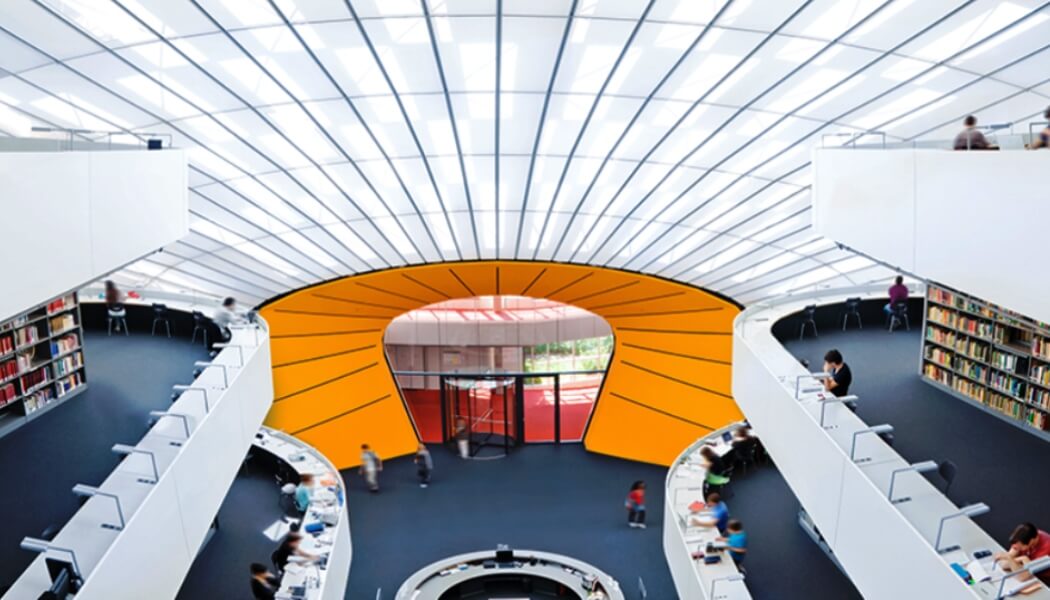1) Utilising libraries’ strategic position
Public libraries hold a unique position within our society; intersecting literacy, culture, education, technology and more. More than this, however, libraries are a trusted service within the heart of our communities, with the ability to better reach the more disengaged and marginalised than many cultural institutions.
Upon announcing the Arts Council’s £4 million fund for libraries, Brian Ashley, former Director of Libraries, Arts Council England said: “Libraries are there for everyone, but their special role in helping people overcome disadvantage is second to none. They are the gateway to opportunity.”
2) Taking advantage of opportunities for funding and revenue
Firstly, libraries now fall under the Arts Council’s remit, so further funding may become available for creative projects that may not have been accessible before.
There may also be revenue opportunities when working with other cultural institutions. Library websites are one of the most popular parts of central council sites, leading to potential advertising/affiliate partnerships. For example, promoting museum, theatre events to library users.
Hiring out creative and entrepreneurial spaces within the library is also an increasingly popular option. See example from The Word, South Tyneside below.
3) Benefiting from the economies of scale and integrating search
Many library services are already benefiting from the economies of scale associated with being part of large or regional library consortia. This may also be possible with cultural partnerships.
An option being explored by some authorities is making local image, museum and library collections available in one place, or through a single search. This also gives library users easy access to a whole host of additional content and knowledge, whilst partners can open up their collection to a much broader audience.
4) Co-location that enhances the library’s offer, not detracts from it
Co-location is an increasingly popular way for libraries to save money, but many projects have received criticism for rooming with services that ‘dilute the library offer’. Therefore, libraries should partner with services that will enhance their message and enhance their role in society. And a trend is appearing that suggests this is indeed the way that libraries are heading.
The examples below show three completely reinvented libraries where different cultural services have come together to form innovative and inspiring services at the heart of their communities.
5) Learning from these great examples…
Storyhouse is Chester’s new £37m library, theatre, cinema and more. The relocation of the public library from down the road allowed for cost savings to be made and transformed the service on offer. The library opens long hours every day and benefits from increased footfall. It also provides users with many new ways to engage with culture and learning.
The Idea Store encompasses ‘Library, Learning and Information’ services in Tower Hamlets. It connects the traditional library, with educational services to form something greater than the sum of its parts. Idea Stores achieved a rating of ‘good’ or ‘very good’ from 92% of people in the 2015 CIPFA Public Library User Survey, and have been cited as a leading light for libraries for years.
The Word is South Tyneside’s state-of-the-art cultural venue. Branding itself, ‘The National Centre for the Written Word’. It features creative suites, immersive storytelling experience, café, ‘creative play’ area and soon a hireable events space. On its first birthday, the library had seen year on year membership growth of 176 per cent.
6) Re-engaging your young readers
What the institutions in the above examples provide are new ways of engaging people in reading, learning, creating and performing.
The highest drop in library usage is among young people. Cultural partnerships may provide new ways of engaging young people in exciting and immersive learning experiences.
Through ACE funding, Merton Council launched a purpose-built art space within Wimbledon Library, with professional sound and lighting rig, stage and equipment for young people.
This is the perfect example of how libraries can inject high quality cultural venues right into the heart of communities that need them. And to great effect, with the library registering 4000 new members.
This was also a key aim in the development of the Storyhouse:
“The project’s makers keep saying it’s about community and diversity, and about reaching young audiences who wouldn’t otherwise dream of going to the theatre.”
7) Building on your existing work
Your library service is almost definitely providing services that fall under the SCL’s Culture Offer; be it maker-spaces, coding clubs and so on. Your drive to innovate and find new ways of engaging audiences is what sets the library workforce apart.
Yet, if you’re looking for a way to take your offer to the level of some of the success stories mentioned in this post, what you may be missing is the resources, savings and partnership that a more integrated venture may be able to provide.











